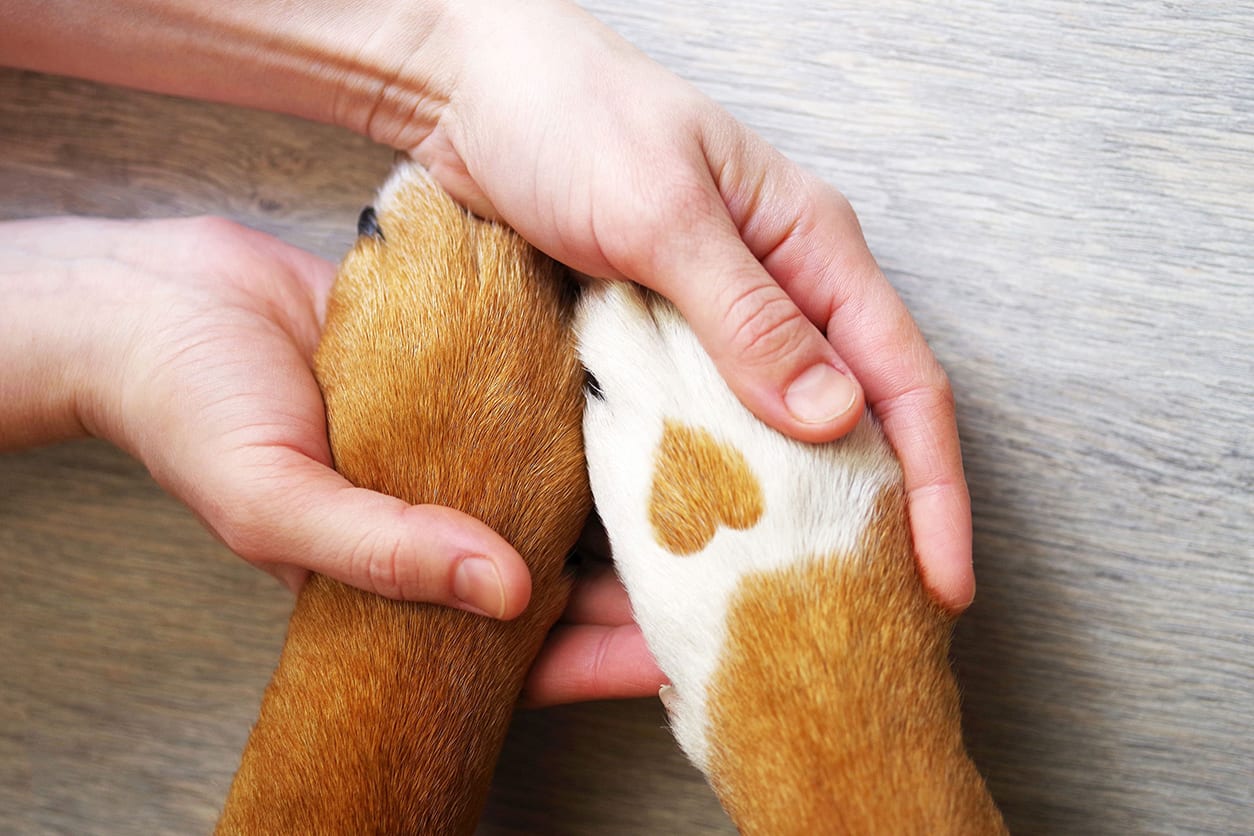Dog Training, Food, and Barking

1. Are some dog breeds friendlier than others?
It all depends on level of training and commitment that the owner wants to provide to their dog. With the correct dog training and starting at a young age, many breeds can develop a friendly disposition. I feel that the key to having a friendly dog is to begin training and socializing them starting at 8 to 12 weeks of age. This will get any dog use to people and other animals and help to reduce their anxiety in new environments and new people. Yet, there are different breeds that will require more effort than others. These would be the working dog breeds, such as German Shepherds, Border Collies, and Siberian Huskies. They are bred for work and oftentimes, when the owner doesn’t properly train these breeds, they can become aggressive and destructive. The breeds that I would not necessarily recommend unless you really know how to work with them are Akita, Belgian Malinois, and Chow-Chows. These breeds are the ones that I don’t necessarily trust. With many dogs, they will give you a verbal or physical warning that they want to be left alone. With these three breeds, I have come to find that they will strike without warning.
2. Why do dogs’ paws smell like corn chips?
The smell of corn chips is due to the bacteria that is naturally occurring on the feet and the moisture from the ground or from their bodies. If the smell gets worse, then your pet might have a yeast infection between the toes. This is usually cause by your pet having allergies. Once the yeast gets worse, their paws can become inflamed causing the dog to lick at the paws. The licking will keep the paws moist and the yeast will continue to grow. When a veterinarian can visually tell if the dog has been licking at its paws by the saliva/porphyrin staining on the feet, especially in light fur colored dogs.
3. Is it okay to only feed your dog dry food?
Feeding your dog dry food is the best. Dry food is formulated in a way to provide the needed nutrients for their diet. Dry food also helps in keeping their teeth clean. Canned and soft foods increase the build-up of tartar on the teeth. The soft foods are made with high levels of sugar and salt sticks to the teeth and cause decay. Continually feeding your dog soft and canned foods will cause your dog to have serious dental issues when they are between the ages of 7 to 10 years of age. Between these years, we are performing oral surgery on your dog and we would most likely end up removing teeth. So, best practice is to give your dog dry food.
4. Why are dogs’ noses always wet?
Noses should be slightly wet and cool. This means that they are well hydrated and that they are not running a fever. Some dogs will have drier noses especially when they age. Cocker Spaniels are notorious for dry noses and they get what is called hyperkeratosis were the dog will develop a thicken ridge around the tip of their nose. Vaseline applied to the nose can help with the dryness of the condition.
5. Can someone with a dog allergy ever “adapt” to living with dogs?
Yes, I think they can. Our bodies are constantly changing as we get older. When we were younger, we never had problems with dogs, but as we get older, our bodies began to change, and we develop allergies towards dogs. One option is to take over the counter (OTC’s) for pet allergies. If this doesn’t help, then the next step will be allergy injections. These injections can help bolster the immune system so the pet owner can live comfortably with the pet. If someone already has allergies and they want a dog, the best option is to look for hypoallergenic dog breeds. These would be the non-shedding dogs such as poodles and mixed poodle breeds.
6. Is it okay to give your dog raw meat?
There’s a lot of people out there that swear by its I am not a fan of the raw meat for a couple reasons. First, dogs are not wild animals such as coyotes and wolves. Although the wild animals are part of the canine family, we have bred the dog to the point that they cannot digest the raw foods properly. Second, to the raw meat is not always well controlled by FDA/USDA standards and there can be issues with Salmonella and E. coli. Freezing the meat does not kill bacteria. We know that after handling raw meat, we wash our hands, yet when your dog licks your hands or face after eating the raw meat, you are not contracting the bacteria. Also, scientist keep Salmonella and E. coli in the freezer until they are ready to experiment with the bacteria. Dry dog food is perfectly healthy for your dog. The companies such as Hill’s, Royal Canin, IAMS, Eukanuba, and the higher quality Purina, spend millions of dollars on developing the different types of dog food that provide the proper nutrition for your dog. These companies make sure that the food is well-balanced and has all the nutrients.
7. Do some dog breeds (e.g. toy breeds) really bark more than large breeds?
The toy breeds do seem to be a little more “yappy”, but I think it is due to how we raise and train the dogs. If the owner makes a “big production” by getting the dog excited whenever they enter or leave the home, then the dog will learn that this is acceptable behavior. Therefore, every time someone comes into the home or leaves, the dog will begin to bark. For some owners, yelling at the dog only encourages them to continue the behavior. The owner must begin retraining the pet’s behaviors by either providing a distractor, such as a food puzzle, before leaving or upon entering, the owner should start to talk quietly to the dog. This retraining will help reduce the barking behavior. I’m not a big fan of the bark collars. I think that just jolts them and scares them more, with the possibility of creating another unwanted behavior.
8. Are male dogs friendlier than female dogs? (Or vice versa)
This depends on the individual dog and the way that the owner trains them. I feel owners are rougher with the male dogs with wrestling with them and teaching them how to be more aggressive.
9. Are some dog breeds, like pit bulls, really more aggressive?
I would say the majority the pit bulls that I see are nice and friendly. The pit bulls want to please their owners. The breed is a little more hyper than other dogs. I think the bad stigma of the breed comes from the raising and training by the owners to have a “tough” dog, a fighting dog. This type of mindset has led to the many incidences as to where the pit bulls attacked people, generating this fear of the breed. I feel that the fear of the pit bull aggressiveness is due the type of damage the breed can inflict on its intended victim. The pit bull has a large jaw and through natural selection, this is designed for grabbing and tearing at the object.
10. Do dogs have a dominant paw?
Yes, male dogs generally lead with their left foot, whereas the female dogs, are all right.
11. Can dogs cry tears when they’re upset?
Dogs do not cry, they whine and complain, but they are not crying. The tearing that the owner sees could come from eye irritations, eye infections, glaucoma, conjunctivitis, or having dry eyes. Certain breeds like the Chow-Chow and Bulldogs can develop distichia. It is when the eyelids role in and rub on that eyeball creating the irritation that causes the tearing. They whine and complain but they’re not crying.
12. Does getting a dog neutered/spayed change their personality?
- Getting your dog spayed or neutered at a young age, it should not affect their personalities. If the dog is spayed or neutered at an older age, the owner would slowly see the dog starting to calm down and become lazy. The owner needs to make sure that they keep their dog busy because they tend to gain more weight. If spaying/neutering at an older age, the dog’s aggressiveness would start to fade away.
- Another reason for the spaying/neutering between the ages of 6 months to 2 years of age is to reduce the chances of getting cancer later in life. Spaying will help in reducing breast cancer and reduce the changes of your female dog getting a pyometra, which is an infection of the uterus.. As for males, neutering will help with decreasing the chances of getting prostate cancer.
- Spaying and neutering will also reduce the chances of your pet of looking for a mate. This will discourage the pets from roaming the streets risking the chance of getting hit by a vehicle or getting into fights.
- Finally, spaying and neutering helps in reducing the unwanted pet population. Go to any shelter and you will see all the dogs that are unwanted. In many states, there are more animals entering the shelters then being adopted out. It is a crisis that can be reduced just by spaying and neutering.
Share This Post
Recent Posts
About Dyer Animal Clinic
We are a place where pets and their people can feel at home. It's a place where wellness is maintained and supported from the time they’re newborns through their golden years.






